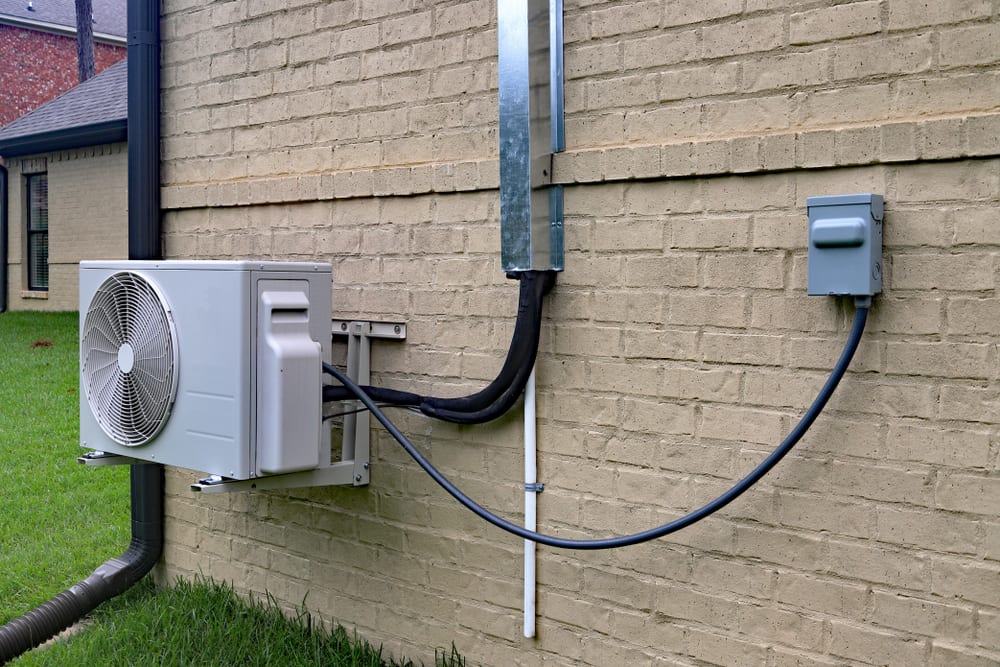Ductless Systems
Ductless HVAC systems, also known as mini-split systems, are heating and cooling solutions that do not require ductwork to distribute conditioned air. These systems consist of an outdoor unit connected to one or more indoor units, providing targeted heating or cooling to specific areas or zones within a building. Ductless systems are ideal for both residential and commercial applications, especially in situations where adding ductwork is impractical or too costly.
Key Features and Benefits of Ductless Systems
Energy Efficiency
No Duct Losses: Traditional HVAC systems lose a significant amount of energy through duct leaks and poor insulation. Ductless systems eliminate this issue by delivering conditioned air directly to each zone, resulting in higher efficiency.

Inverter Technology: Ductless systems often use inverter-driven compressors that operate at variable speeds, optimizing energy use and reducing electricity bills.
Zoning Capabilities
Customized Comfort: Ductless systems allow for individual temperature control in different zones or rooms, ensuring personalized comfort. Each indoor unit has its own thermostat, so occupants can set their preferred temperature.
Multiple Indoor Units: A single outdoor unit can be connected to multiple indoor units, providing flexibility in managing multiple zones without extensive ductwork.
Ease of Installation
No Ductwork Required: Ductless systems are easier to install than central HVAC systems because they do not require ductwork. This makes them a cost-effective option for older homes or buildings without existing ducts.
Compact and Flexible Design: Indoor units can be mounted on walls, ceilings, or floors, and the thin refrigerant lines can be routed through walls with minimal disruption, making installation quick and easy.
Improved Indoor Air Quality
Advanced Filtration: Ductless systems come with multi-stage filtration systems that reduce dust, allergens, and other pollutants, improving indoor air quality.
Reduced Contaminants: Since there are no ducts to collect dust and debris, ductless systems minimize the spread of contaminants throughout the building.
Quiet Operation
Low Noise Levels: Ductless indoor units are designed to operate quietly, making them suitable for bedrooms, offices, libraries, and other noise-sensitive environments.
Versatility and Scalability
Suitable for Various Applications: Ductless systems are perfect for a variety of applications, including single rooms, multi-room zones, additions, converted spaces (like garages or basements), and small apartments.
Scalable Solutions: They can be easily scaled to accommodate additional indoor units if more zones need to be added, offering flexibility for future expansion.
Components of a Ductless HVAC System
Outdoor Unit (Compressor/Condenser)
The outdoor unit houses the compressor, condenser, and expansion valve. It is responsible for removing heat from the indoor units during cooling and absorbing heat during heating (if using a heat pump).
Indoor Unit (Air Handler)
The indoor unit contains the evaporator coil, fan, and air filter. It blows the conditioned air directly into the room. These units are available in various styles, including wall-mounted, ceiling cassette, floor-standing, and concealed duct.
Refrigerant Lines
The refrigerant lines connect the outdoor unit to the indoor units, transporting refrigerant between them. They are typically narrow and can be easily concealed within walls.
Remote Control or Smart Thermostat
Ductless systems usually come with a remote control for each indoor unit, allowing for easy adjustment of temperature, fan speed, and mode. Some systems also support smart thermostats and smartphone apps for remote control and scheduling.
Types of Ductless Systems
Single-Zone Ductless Systems
One Outdoor, One Indoor: These systems are designed to cool or heat a single room or area. They are ideal for small spaces, room additions, or areas that need supplemental heating or cooling.
Multi-Zone Ductless Systems
One Outdoor, Multiple Indoor Units: Multi-zone systems allow one outdoor unit to connect to multiple indoor units, each serving a different room or zone. This setup provides individualized control and is perfect for homes or buildings with multiple rooms requiring separate temperature settings.
Ductless Heat Pumps
Heating and Cooling: Ductless heat pumps provide both heating and cooling capabilities by reversing the refrigerant flow. They are highly efficient and suitable for year-round use in moderate climates.
Ductless Air Conditioners
Cooling Only: These systems are designed exclusively for cooling and are ideal for hot climates or applications where only cooling is needed.
Considerations for Choosing a Ductless System
Building Size and Layout
Determine the number of zones and the capacity needed for each zone. Single-zone systems are suitable for small spaces, while multi-zone systems are better for larger or multi-room applications.
Energy Efficiency
Look for ductless systems with high SEER (Seasonal Energy Efficiency Ratio) and HSPF (Heating Seasonal Performance Factor) ratings to ensure maximum efficiency and cost savings.
Installation Costs
While ductless systems have lower installation costs compared to traditional systems, the number of indoor units required can affect overall costs. However, the absence of ductwork often offsets this.
Aesthetics and Indoor Unit Style
Consider the indoor unit style (wall-mounted, ceiling cassette, floor-standing, etc.) to match the room’s aesthetics and design.
Maintenance and Longevity
Regular maintenance, such as cleaning filters and checking refrigerant levels, is essential for optimal performance and longevity. Ductless systems typically require less maintenance compared to traditional HVAC systems.
Local Climate
In extremely cold climates, a backup heating source may be needed for ductless heat pumps, as their efficiency can decrease in very low temperatures.


